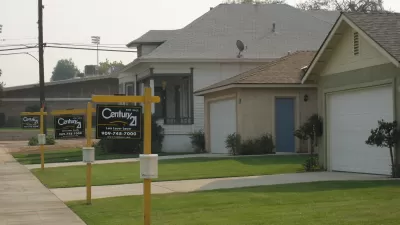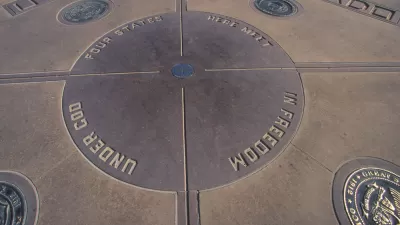The Lincoln Institute of Land Policy has released its annual comparison of property tax rates around the country, adding new wrinkles of analysis for this year's edition.

"The Lincoln Institute of Land Policy has released the latest edition of its annual report on property tax rates in all 50 U.S. states, with a new analysis of how communities raise revenue to pay for basic public services," according to an article on the At Lincoln House blog.
The Lincoln Institute partnered with the Minnesota Center for Fiscal Excellence on the "50-State Property Tax Comparison Study" to track the effective tax rate for residential, commercial, industrial, and apartment properties in more than 100 U.S. cities. Planetizen also picked up news of the previous reports, released in 2015 and 2014.
The blog post explains the analysis included in this year's report, such as a comparison of tax rates between cities, "exploring factors such as the reliance on property taxes relative other revenues such as the sales tax; the variation in property values; the differential treatment of residential and commercial property; and the level of local government spending."
For those keeping track at home, Bridgeport, Connecticut tops the list again for the highest property tax in the nation, just as it did the previous two years. This year's edition of the report also explains why its property tax rate has reached 3.88 percent of median home value: "high property tax reliance." Compare that to the cause of the second city on the list, Detroit, which has achieved a 3.81 percent property tax rate due to "low property values."
FULL STORY: Lincoln Institute Releases New Analysis of Property Taxes in 50 States

Maui's Vacation Rental Debate Turns Ugly
Verbal attacks, misinformation campaigns and fistfights plague a high-stakes debate to convert thousands of vacation rentals into long-term housing.

Planetizen Federal Action Tracker
A weekly monitor of how Trump’s orders and actions are impacting planners and planning in America.

Chicago’s Ghost Rails
Just beneath the surface of the modern city lie the remnants of its expansive early 20th-century streetcar system.

Bend, Oregon Zoning Reforms Prioritize Small-Scale Housing
The city altered its zoning code to allow multi-family housing and eliminated parking mandates citywide.

Amtrak Cutting Jobs, Funding to High-Speed Rail
The agency plans to cut 10 percent of its workforce and has confirmed it will not fund new high-speed rail projects.

LA Denies Basic Services to Unhoused Residents
The city has repeatedly failed to respond to requests for trash pickup at encampment sites, and eliminated a program that provided mobile showers and toilets.
Urban Design for Planners 1: Software Tools
This six-course series explores essential urban design concepts using open source software and equips planners with the tools they need to participate fully in the urban design process.
Planning for Universal Design
Learn the tools for implementing Universal Design in planning regulations.
planning NEXT
Appalachian Highlands Housing Partners
Mpact (founded as Rail~Volution)
City of Camden Redevelopment Agency
City of Astoria
City of Portland
City of Laramie




























